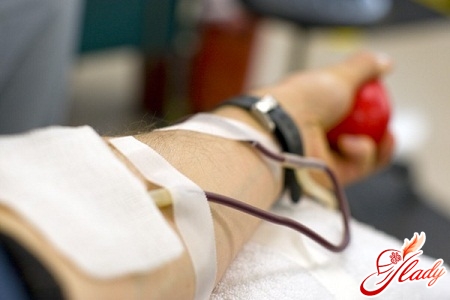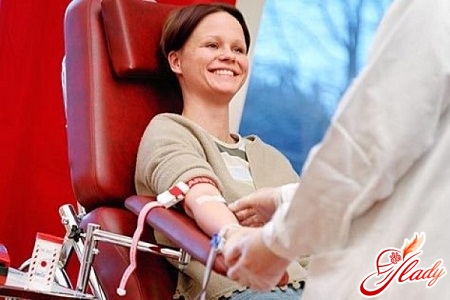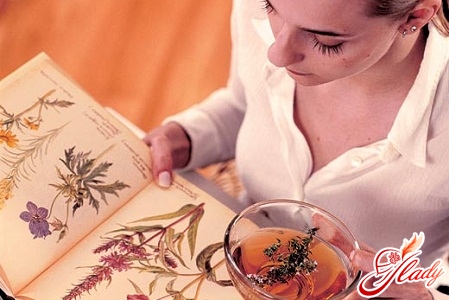 Modern mankind regularly facesall new and new different diseases. And it is not surprising - the body of modern man is adversely affected by a variety of factors: chronic fatigue, typical for most people, an unfavorable ecological atmosphere, not a very healthy food, and many others. Yes, and the work of the immune system of modern man in recent years leaves much to be desired. But human health depends largely on immunity. Therefore, the main task before the doctors is to strengthen the immunity of a person and increase his efficiency. Modern pharmacology offers a fairly large number of drugs that are designed to stimulate the immune system. They are called immunomodulators. However, in no case should we treat these drugs as vitamin-mineral complexes. Their effect on the body is very strong, and therefore they must be applied with great care, and only according to the doctor's prescription. And doctors, as a rule, try to resort to treatment with such pharmacological drugs very rarely, only in the most extreme cases. In addition to pharmacological drugs, there is a fairly large number of other ways to strengthen immunity. And one of these methods is autohemotherapy - transfusion of blood from the vein into the buttock. Simply put, a person takes blood from a vein and is injected into his buttock - either subcutaneously or intramuscularly. The transfusion of blood from the vein into the buttock is considered a procedure of immunocorrective therapy.
Modern mankind regularly facesall new and new different diseases. And it is not surprising - the body of modern man is adversely affected by a variety of factors: chronic fatigue, typical for most people, an unfavorable ecological atmosphere, not a very healthy food, and many others. Yes, and the work of the immune system of modern man in recent years leaves much to be desired. But human health depends largely on immunity. Therefore, the main task before the doctors is to strengthen the immunity of a person and increase his efficiency. Modern pharmacology offers a fairly large number of drugs that are designed to stimulate the immune system. They are called immunomodulators. However, in no case should we treat these drugs as vitamin-mineral complexes. Their effect on the body is very strong, and therefore they must be applied with great care, and only according to the doctor's prescription. And doctors, as a rule, try to resort to treatment with such pharmacological drugs very rarely, only in the most extreme cases. In addition to pharmacological drugs, there is a fairly large number of other ways to strengthen immunity. And one of these methods is autohemotherapy - transfusion of blood from the vein into the buttock. Simply put, a person takes blood from a vein and is injected into his buttock - either subcutaneously or intramuscularly. The transfusion of blood from the vein into the buttock is considered a procedure of immunocorrective therapy.
Features of autohemotherapy
This type of therapy is used in a variety ofareas of medicine: in oncology, hematology, therapy. In addition, autohemotherapy is very popular in cosmetology. There are also several different modifications of autohemotherapy, but doctors, in most cases, give preference to the classical procedure. To carry out a classic autohaemotherapy, the medical worker must take blood from the patient's vein. And it is this fresh blood that is necessary immediately after its fence, without any treatment and without exposing it to any influences, to introduce intramuscularly, into the upper-arm quadrant of the buttock. In order to correctly identify the place where you need to make an injection, you need to visually divide the buttocks with two lines - horizontal and vertical. Get four squares. That's in the right or left upper outer squares and you need to make an injection. This requirement is explained very simply - it is in these parts of the buttocks that the smallest number of nerve endings is located. But the blood vessels, on the contrary, there is much more - thanks to this blood, and any pharmacological drugs, absorbed much faster. So, the risk of infiltrates is much less. Incidentally, in order to reduce the risk of infiltrates to a minimum, doctors recommend that you apply a heating pad to the injection sites. Well and, needless to say, do not forget about handling the jabs. This article will not describe the scheme of such treatment - they are purely individual. Everything depends on the purpose for which blood transfusion is used from the vein to the buttock, what is the general condition of the sick person and many other factors. The only thing that is true in all cases is the duration of the course of autohemotherapy. It averages ten injections. The dosage administered under the skin of the blood is also determined by the physician individually, in each case. However, if during the autohaemotherapy, the patient develops side effects such as an increase in body temperature or the appearance of a strong swelling of the tissues in the area of injection, the dose of the next portion of the injected blood will be reduced at least twice. In some cases, the doctor decides about the need for subcutaneous, and not intramuscular, venous blood. However, with such injections, the doctor needs to be especially careful - with subcutaneous injections, very often local inflammatory reactions occur that manifest themselves as swelling, pain and redness in the area of the injection, and general negative symptoms such as:
- Significant increase in body temperature.
- The appearance of muscle pain and pain in the joints.
- Appearance of a feeling of chill.
At the first similar symptoms from a subcutaneous injection of blood should be immediately discarded. 
Indications for autohemotherapy
And now it's time to talk more aboutIn what cases can doctors resort to the treatment of a sick person with the help of autohemotherapy, and in what cases is this strictly forbidden. So, the indications for autohaemotherapy:
- Skin diseases
Transfusion of blood from the vein into the buttocks is extremelyeffectively with all kinds of skin diseases, for example, such as atopic dermatitis, various forms of eczema, furunculosis. Autohemotherapy has helped thousands of teenage girls get rid of youthful acne and acne. Cosmetologists and dermatologists have long noticed and widely use this property of autohemotherapy.
- Diseases of the female reproductive system
Also often to the use of autohemotherapyDoctors - gynecologists resort. This procedure most favorably affects the entire work of the reproductive system of women. Especially effective autohemotherapy for diseases of genital organs, having an inflammatory nature, both acute and chronic. Significant relief comes already on the fifth - the sixth day of treatment.
- Vegetosovascular dystonia
Autohemotherapy is not just very effectiveeliminates all the symptoms of this disease, but also eliminates the very root cause of the disease. Those doctors who specialized in studying and applying autohemotherapy in practice, unanimously assert that the clinical effects of such treatment are very and very similar:
- Rehabilitation and protective mechanisms of the human body are greatly intensified.
- The intensity of the soft tissue regeneration process is increasing, both after injuries and after surgical interventions.
- Increase both mental and physical performance.
Other blood transfusions
In addition to autohemotherapy, there are other typesblood transfusion. Thus, transfusion may be necessary if a person has had extensive blood loss, for example as a result of surgery or any serious injury. Such a loss of blood poses a serious threat to human life, as it significantly reduces the level of hemoglobin and blood pressure. Transfusion is expedient only if the bleeding is stopped. To do this is possible only in a hospital setting, and only with the use of suitable single-group blood. Supplies blood to hospitals, usually a blood transfusion station. She, in turn, receives blood from the donor. Incidentally, it is the blood transfusion station that ensures that the blood is of proper quality. 
Features of blood transfusion
Transfusion is quite complex andA serious procedure that requires special training and ongoing medical supervision. The first thing to do before a blood transfusion is to check for individual compatibility of the blood of the donor and the recipient. If the results of this test are satisfactory and the compatibility is sufficiently high, the physician will proceed with the so-called biological test. The essence of the biological test is as follows: the patient receives 25 ml each. blood intravenously, every three minutes, for twenty minutes. All this time the doctor should observe very carefully the basic vital signs of the sick person. And only if this test yields satisfactory results, one can proceed directly to the transfusion itself. During the blood transfusion, the sick person must also be under continuous medical supervision. The transfusion itself should be done very slowly, and the doctor should record such basic vital indicators as:
- Blood pressure level.
- Heart rate.
- Other subjective feelings of a sick person.
These precautions are extremely important - in the case ofThe appearance of signs of deterioration of the transfusion state should be immediately stopped. There is another type of transfusion, which is also sometimes used in medicine - this is a reverse transfusion. Unlike the direct transfusion described above, which uses donor blood, in this case it uses its own blood, which is poured either into the thorax or into the abdominal cavity. Similar cases are typical for ectopic pregnancy, injuries of parenchymal organs and others. In any case, in no case should we forget that any manipulations related to blood transfusions should be performed only by medical personnel. Self-medication in this case is unacceptable. We advise you to read:









